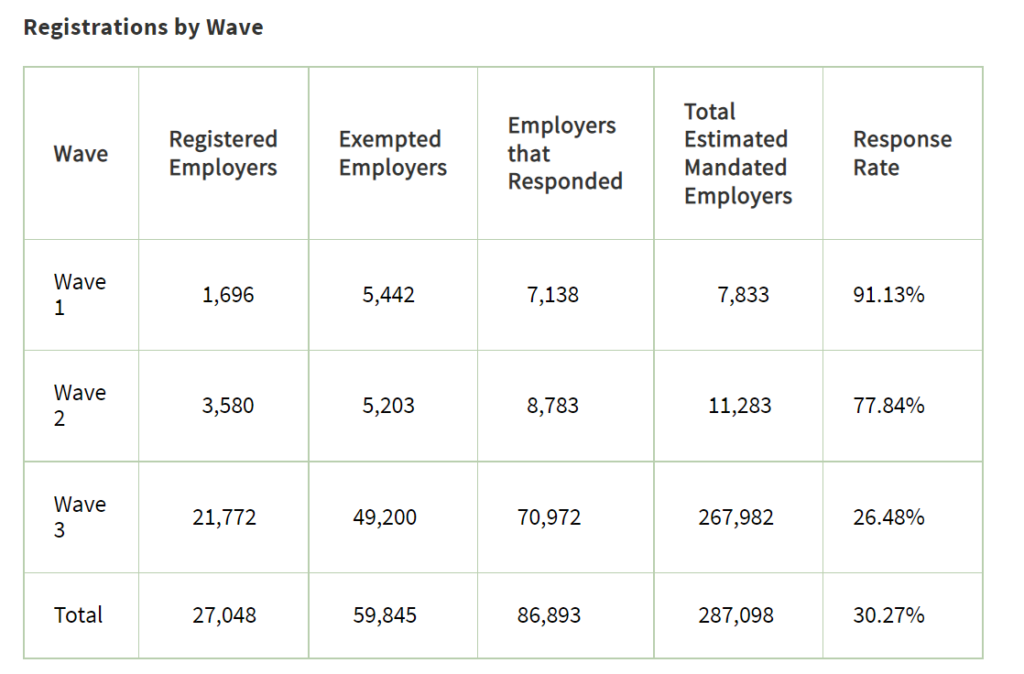Link: https://www.asppa-net.org/news/where-does-calsavers-stand
Graphic:

Excerpt:
CalSavers, the state-provided retirement plan for employees whose employers do not provide one, was launched on July 1, 2019. Now, more than two and a half years later, where does it stand?
Registration
Registration was set to take place in three waves:
- Wave 1: Employers with more than 100 employees had to register by Sept. 30, 2020.
- Wave 2: Employers with 51-100 or more employers had to register by June 30, 2021.
- Wave 3: Employers with five or more employees must register by June 30, 2022.
CalSavers has reported that the number of registered employers more than tripled in 2021
Author(s): JOHN IEKEL
Publication Date: 24 Feb 2022
Publication Site: ASPPA